John Greiner celebrated his 85th birthday in February 2022 and, six months later, sailed his newly launched 24′ boat into a slip at the North Cape Yacht Club in La Salle, Michigan. The boat’s arrival was the culmination of 23 months of work, and the realization of John’s lifelong dream to build a small cruiser.
When he was five years old, John was introduced to sailing by his father. “It was World War II,” John says, “and little boys didn’t get to do anything because of gas rationing and lights out at 8 p.m. to save energy. My dad was line foreman at Ohio’s Toledo Edison and was kept out of the war to repair wires…they were afraid of saboteurs taking down the electrical lines or bombing our factories. He’d come home from work on a Saturday afternoon and say, ‘George wants us to go sailing.’ So off we’d go to Toledo Yacht Club and join George King on OLD SAM, his 22′ by 8′ centerboard K-class catboat. They’d let me take the tiller. I had nothing to compare it with, but I fell in love with sailing.”
In 1951, when he was 14, John bought his first boat, a 12′ Nipper. Designed by Ray Green, the Nipper was a marconi-rigged catboat first built in 1938. There was an active Nipper fleet at the Toledo Yacht Club and John began racing with about 20 other boats. Within a year he was winning. It was the start of a long racing career on Lake Erie.
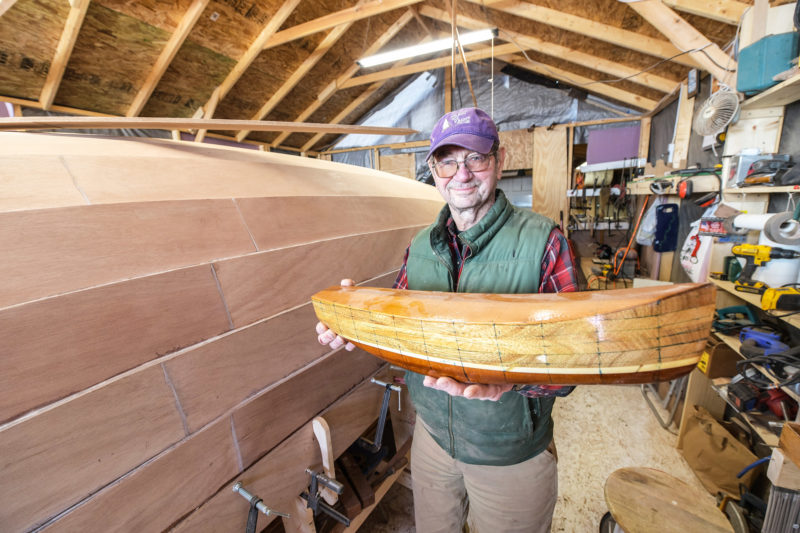 Photographs by Randy Mascharka
Photographs by Randy MascharkaBefore building his dream boat, John created a half model by gluing together some pieces of wood and then shaving the hull to the shape he wanted—high-sided, plumb transom, slightly raked stem. Initially he considered a centerboard but ultimately went with a fixed keel so that he could maximize the cabin space.
Three years after buying his Nipper, 17-year-old John tried his hand at building a boat. “I was working at a boatshop where we worked on molded-plywood outboard boats,” he says. “I built a Rhodes Bantam in the shop. I loved it and thought I’d make a career building wooden boats, but five months after graduating from high school in 1955, the boatshop owner said, ‘all my dealers are buying those damn fiberglass boats.’ Just the year before, he had told me that fiberglass construction was a fad, and I shouldn’t worry about it. But people still had wooden boats, so I started doing repair work. And I built four more Rhodes Bantams.”
When he wasn’t working, John was on the water sailing and racing. It was while he was racing Thistles that he tried his hand at sailmaking, a move that would change the direction of his career. “I made myself a sail and then friends started asking for sails for their boats. I set myself up as Greiner Sailmakers and made sails for 52 years before I turned the business over to my grandson, Brian, in 2019.”

John had built small boats before and even cold-molded a 30 footer with a friend, but MY WAY was the biggest he had built solo and his first lapstrake hull. The project was too large for John‘s garage so he built a temporary extension off the back, but space was still tight.
While boatbuilding may not have been the focus of his career, John continued to build boats for himself and the family. With the exception of a half-ton cold-molded 30′ sailboat, which he built with his friend, Jim Davis, his builds were all small: Penguins, Optimists, kayaks, and iceboats. “I was always too busy and didn’t have the spare time to build a bigger boat,” explains John. When COVID struck everything changed.
In early 2020, Brian was running the sailmaking business, but John was still working as an advisor and going into the office and sail loft on a regular basis. As the threat of COVID grew, however, the family became increasingly nervous. It was John’s daughter, Jill, who spoke up: “Dad, get out of here, you shouldn’t be here with all these young people partying and what-not. They don’t need you here anymore.” It was, says John, a pretty harsh message, but then the light came on: “At the age of 83,” he says, “I was finally free, with time to follow my dreams, time to build my own little cruising boat.”
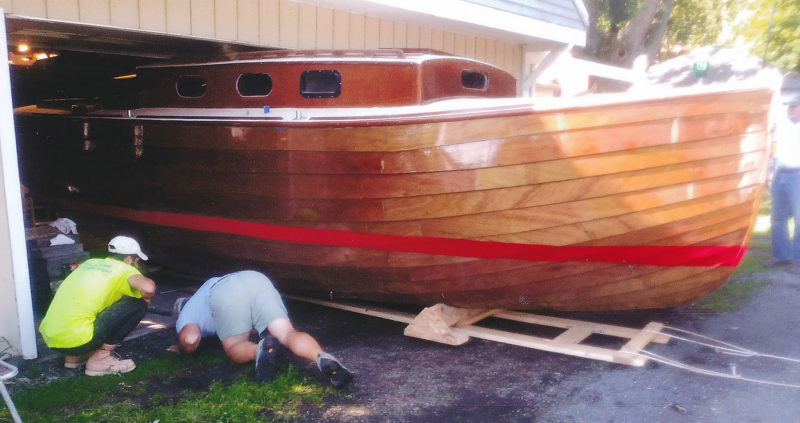 Courtesy of John Greiner
Courtesy of John GreinerMY WAY emerges from the garage. The move was complicated and required removing the door frame leading into the garage to accommodate the boat’s beam, and then removing the top frame from the front door and jacking it up to take out the span’s sag. There was just enough space for the boat to slide out beneath.
At the time, John was still sailing his Santana 35, RED CLOUD, in which he had won 150 first-place flags since the beginning of the 2000s, but she was 41 years old and had been raced hard for most of that time. And, John was forced to admit, she was just too big for him these days. He turned his thoughts to the next chapter. He would design and build a new boat in which he and his wife, Judy, could enjoy cruising for the next five years, until he was 90 or more.
Lake Erie, where they would be sailing, is known for its occasional serious and sudden storms. John decided that 24′ would be as small as he should go. It would have accommodations for four so they could take friends along on cruises. It needed to have full headroom, which would not be easy on a 24-footer, and John knew that a taller cabin would give the boat a “high look,” but comfort and safety were all-important.
Never one to do things without thought and planning, John developed the design by building a half model. Using a 1:12 scale—“It made the math easy!”—he glued some wood together and got out his block plane. He shaved until he had a hull with flat topsides, a fairly plumb bow, and a vertical transom. Lake Erie is relatively shallow and John considered fitting a centerboard, but didn’t want to compromise the interior space. Instead, he designed the boat to take a fixed keel.

John sits in the cockpit of MY WAY—where a racing background meets a cruising future. The tiller extension is a reflection of John’s many years racing small boats and allows him to sit forward of the outboard and mainsheet. The placement of the outboard within the cockpit is a nod to John’s age and an acceptance that he no longer wants to be leaning out over the transom to start the motor.
John’s garage wasn’t large enough for building the boat, so he built a 26′ × 16′ workshop off the back of it, and by October 2020 he was ready to start the boat. He took the lines off his model and scaled them up to construct 10 frames. He was, he says, torn between cold-molding and lapstrake but in the end went for lapstrake because he didn’t want his boat to “look like every other fiberglass boat.” To educate himself in lapstrake techniques he read the Clinker Plywood Boatbuilding Manual by Iain Oughtred, Practical Yacht Joinery by Fred P. Bingham, and The Gougeon Brothers on Boat Construction.
John created the molds, built the strongback, hung the molds and laminated stem, laminated the keelson, hung the transom, and bent on the 1 1⁄2″ × 2″ sheer battens. He spent a week fairing the molds. “Because I was only working off my model and not from plans drawn by a professional naval architect,” says John, “getting things fair took longer than I’d anticipated.” He cut the planks. “Each plank is 9” wide and I could get six pieces out of one sheet of 1⁄2″ marine-grade plywood. I scarfed these together. I got all the planking—13 strakes—out of 14 sheets of plywood. When the hull was fully planked, I epoxy-coated it and then we had a turning-over party. Forty friends came over and the youngest 20 of them picked it up and flipped it over. It took two minutes!”
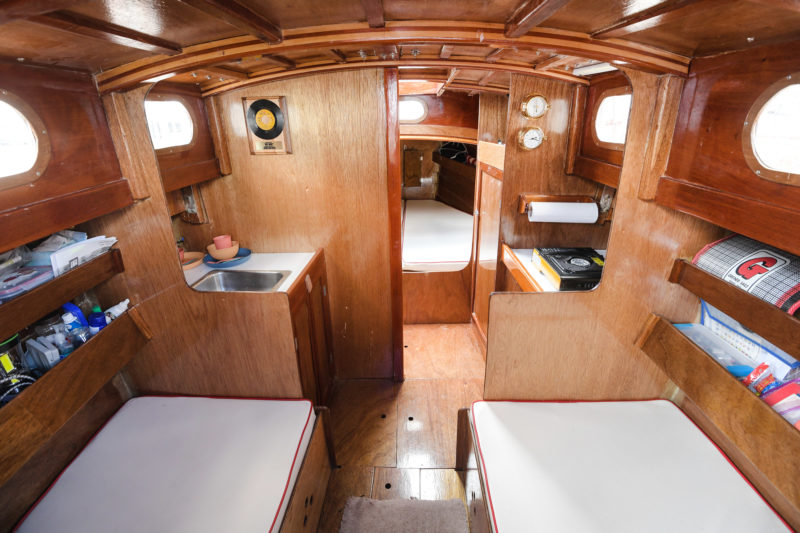 Randy Mascharka
Randy MascharkaDown below there are accommodations for four and full standing headroom. Thanks to the many large portlights there is plenty of natural light, and with both a built-in sink and porta-potti, longer cruises on the Great Lakes will be comfortable.
With the hull right-side up, John worked on fitting out the interior and completing the structural framework. He ’glassed-in bulkheads of ½″ marine plywood and floors of 2″ Indonesian pine and built accommodations for a porta-potti, a sink and an icebox, a double berth in the forepeak and twin saloon berths. He made a well for the outboard motor because, “When I’m 90,” he says, “I won’t have to lean over the stern, I can stay in the cockpit and deal with the motor from there.” The cockpit was framed out, the sole installed, and the side benches—hinged to access spacious lockers beneath—were fitted. The deck, two layers of 1⁄4″ plywood laid over laminated 2″ × 2″ beams, was followed by the mahogany cabin sides and cockpit coaming.
When the build was complete and there was still all the finish work to be done, John’s friend, Ben Riley, showed up to lend a hand. “We sanded everything down with 220-grit sandpaper and then coated the deck, cockpit, and cabin with three coats of epoxy before applying three coats of varnish.” John had planned to paint the hull blue but decided, instead, to leave it bright so the grain of the wood could be seen.
 Randy Mascharka
Randy MascharkaThe two saloon berths are a good width and, thanks to cut-outs beneath the cockpit, long enough for most adults. The lower shelf fiddles are angled to provide a comfortable back rest.
Then, says John, “the fun started. We had to get the boat out of the shed, through the garage, and into the street. We had a lot of help. The boat was in a cradle and my son-in-law, Gary Goldberg, engineered two 16′-long 2 × 6s, which he slid under the cradle. We rolled the whole contraption—cradle and all—on 1″ pipes. The boat’s beam is 8′ plus the rubrails, which we had left off at this point. The back door into the garage is 8′ wide, so I had to remove the door frame and we wheeled it through into the garage…it just touched!”
With the boat still in the garage, John fitted the rubrails and then, once more, they were on the move. This time there was ample clearance of the boat’s beam, but height was a concern. “We had removed the upper frame of the door but, even so, it was too tight a fit and she got held up on the frame of the cabin hatch. We couldn’t remove that so, instead, we stood a 4 × 4 on end on a bottle jack and raised the door opening just enough to take the sag out of it and—BINGO—we rolled out into the street. Now all we had to do was install the keel and launch.”
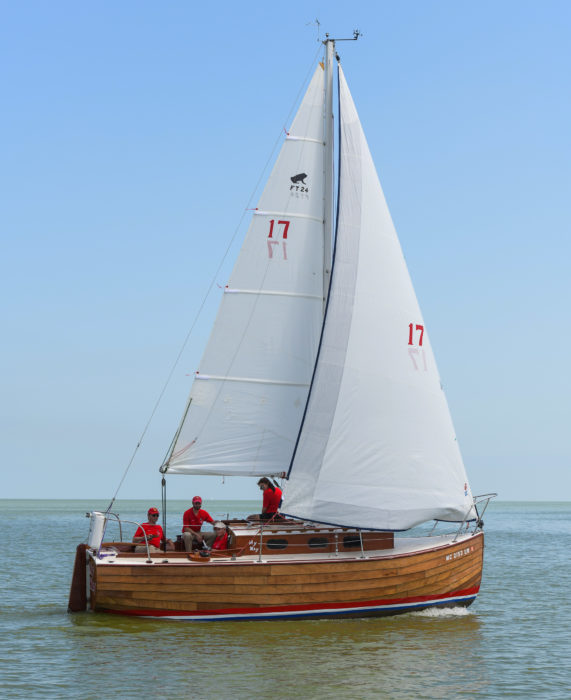 Randy Mascharka
Randy MascharkaMY WAY’s sail plan with fully-battened mainsail and large overlapping genoa is more evidence of John’s racing influences. Despite being only 24′ long, there is more than enough room for four adults on board.
While that might sound straightforward, John and his friends were faced with more challenges. John had received a $5,000 estimate to have the keel pre-fabricated. It was too expensive. But his friend Mike Fahle found an old J24 for sale for $1,000. The J24, John says, was in poor condition, but the keel could be reused on his new boat. It took the friends seven hours and 25 Sawzall blades to remove the keel. John’s boat was lifted in slings on a hoist at Jockett’s Marina on the Ottawa River in Toledo and the keel was maneuvered into position on a forklift truck. The keelbolts lined up perfectly and the whole assembly was bolted and epoxied into place.
More parts were salvaged from the J24: the boom, the bow and stern pulpits, the stanchions, the rudder gudgeons, and a few other pieces. The mast was repurposed from a C&C 24 and a friend donated a set of winches. John made new sails and his daughter, Jill, and Gary helped with the rigging.
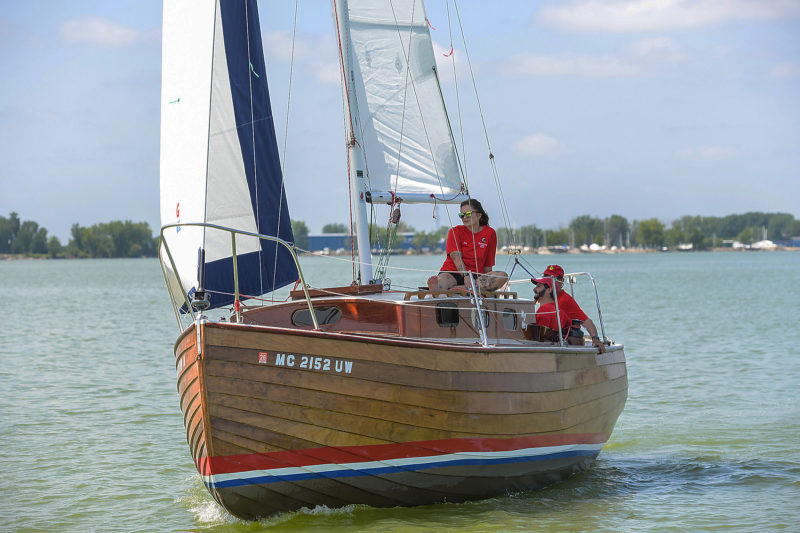 Randy Mascharka
Randy MascharkaThe pulpits and stanchions were salvaged from a J24 that was to be demolished; they fit MY WAY perfectly. The uncluttered cabintop provides comfortable seating on a fair day.
The boat was launched from the marina into the Ottawa River and with John, Judy and friend Jerry German aboard, sailed from the river to the North Cape Yacht Club in La Salle, Michigan. They christened the boat MY WAY, and took the family out sailing. “We found her to be very well-mannered,” says John, “I could steer her with two fingers on the tiller. We sailed at 6 knots in medium winds, and she pointed well. I’m very pleased with her performance.”
John and Judy are looking forward to several years of happy cruising around Lake Erie. He may no longer be racing, but he is still out on the water, sailing, enjoying the wind and the weather, and, as John says, “still doing it MY WAY.”![]()
Jenny Bennett is managing editor of Small Boats.
Do you have a boat with an interesting story? Please email us. We’d like to hear about it and share it with other Small Boats readers
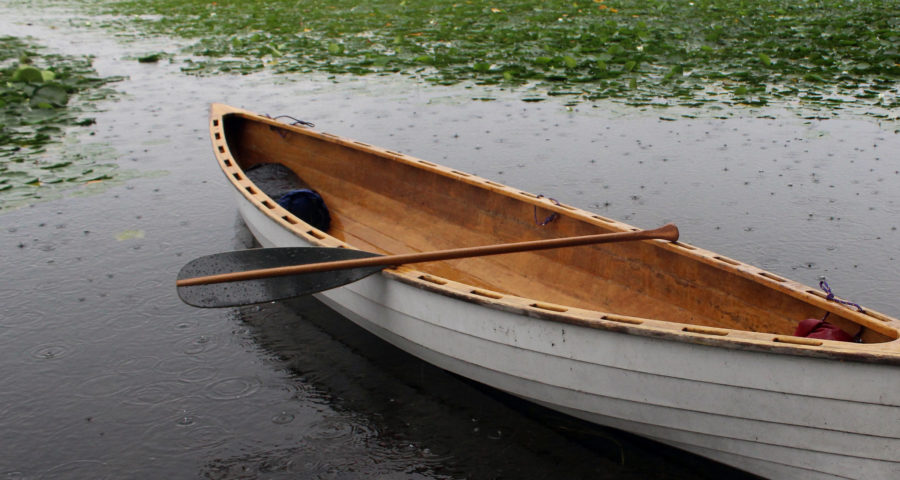
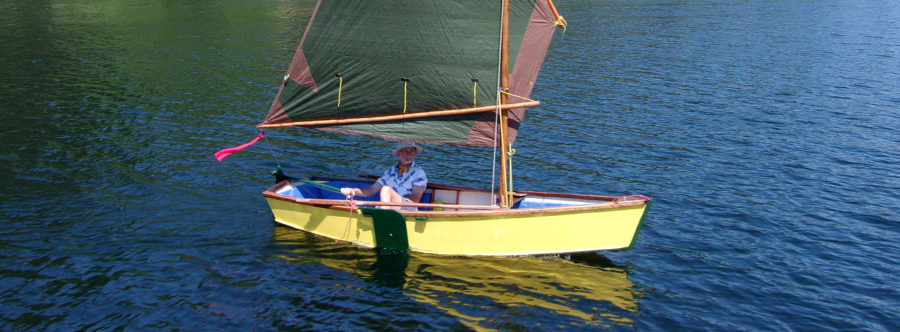
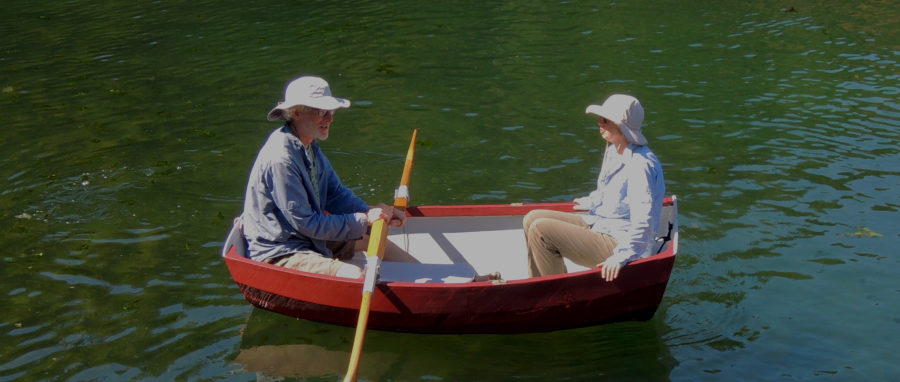
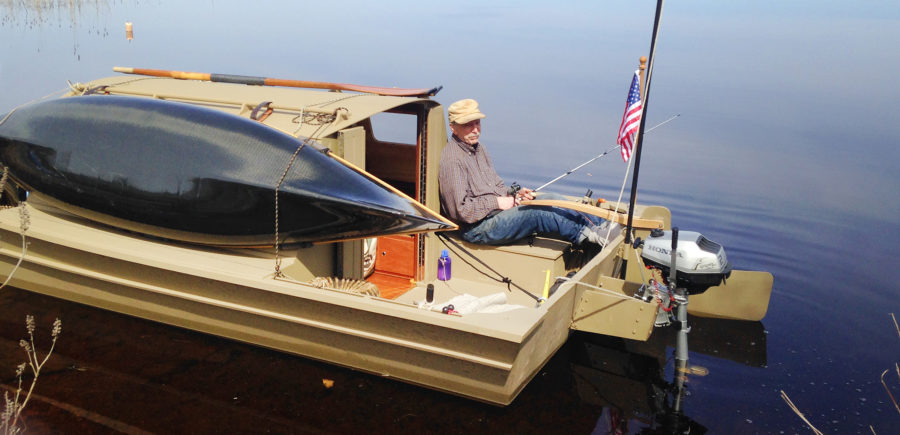
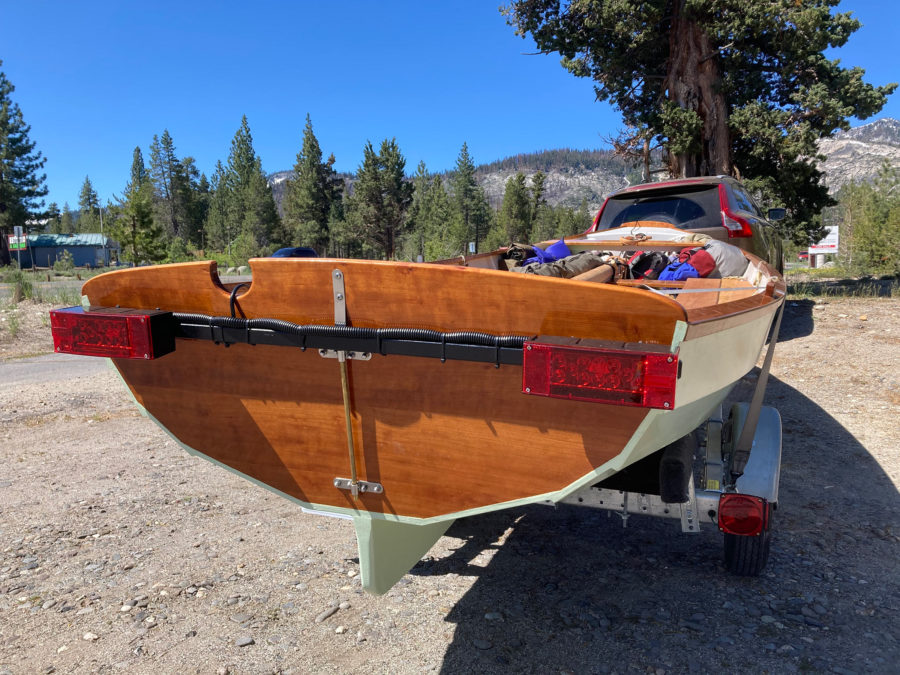
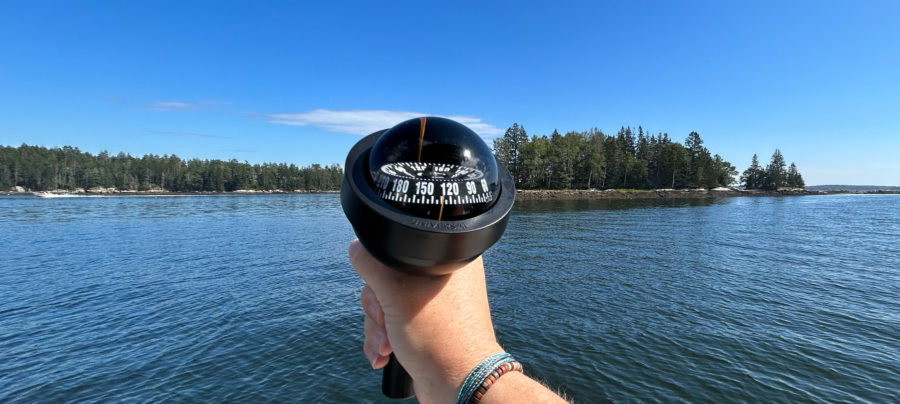
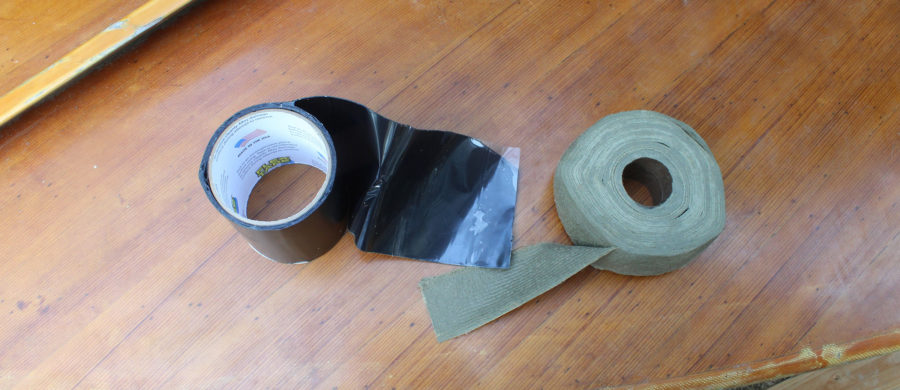
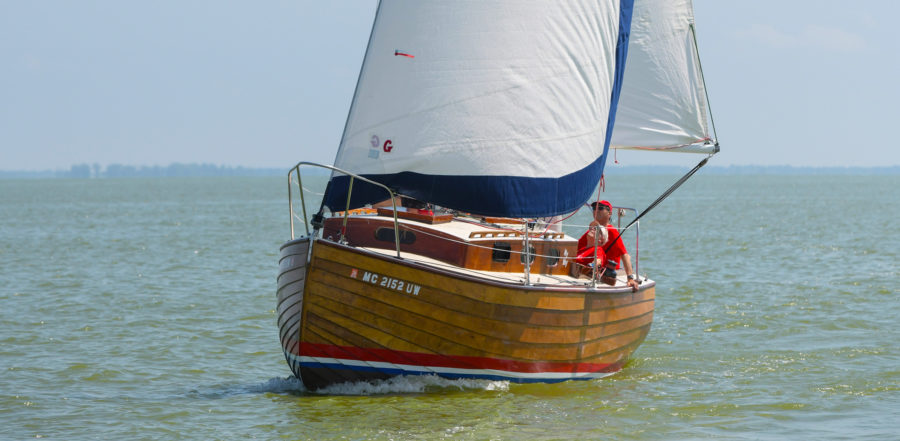
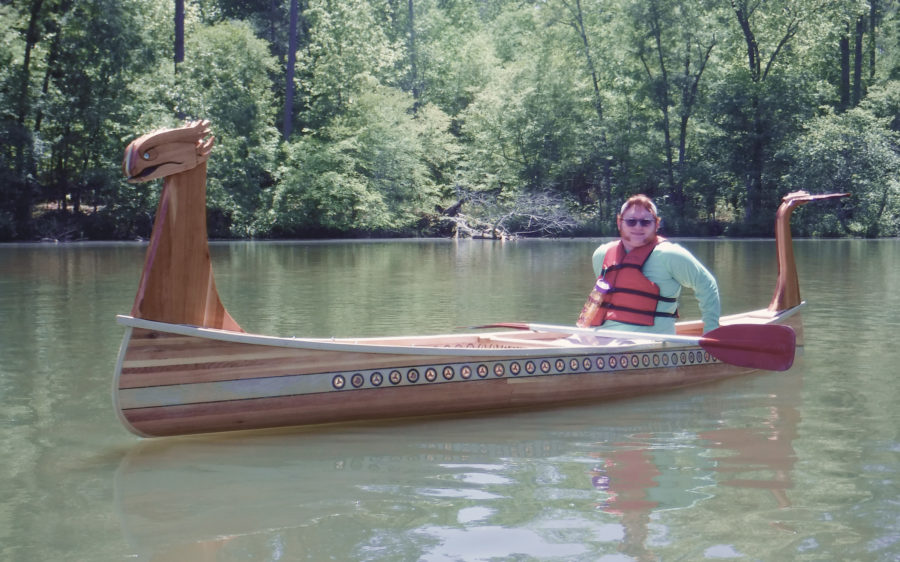
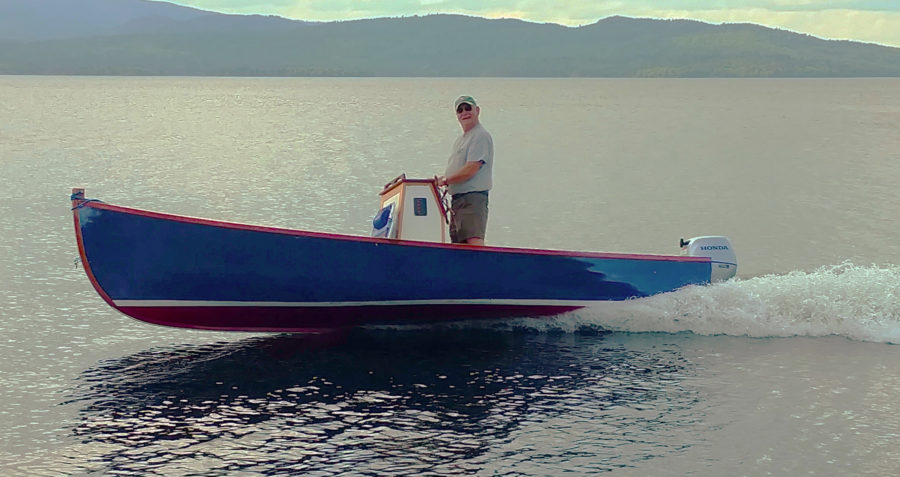

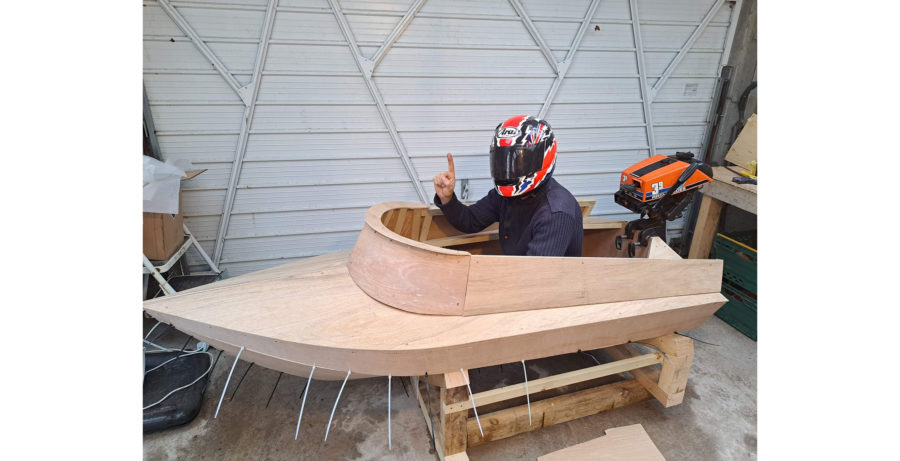
John and Judy has made us all better sailors. Congratulations to a job well done. I am proud to have been a sailing friend, customer—he made sail boom sunshade and covers with help from Mike Fahle for my Harpoon, 21′ monohull. I missed seeing RED CLOUD at the Port Clinton Yacht Club Green Island race. Fair winds and Happy Sailing MY WAY.
John is one of the best in so many categories and friend to sailing at the top of the list. Top of my friend list as well. Very good descriptive article and just touches his support and involvement in sailing and racing that spans his life. MY WAY could just as well been NEVER SAY NEVER!!
John,
You have more energy than I do at 76. Anyhow, I am from Pittsburgh, but have vacationed / summered in Vermilion, Ohio. Put that on your ports of call, and you will be glad you did. Make sure you contact the local paper. The locals will enjoy your boat – and you, too.
Excellent article, strong encouragement for the rest of us: get out and do it.
Thanks
Perfectly said (70-year-old here)
John is a sailing legend in the Western Basin of Lake Erie. He was an early member of the Jolly Roger Sailing Club (JRSC), which was founded in Toledo in 1946. For decades, John has touched countless lives at our club. We annually give out the “John Greiner Mentorship Award” to the person who has contributed the most to our junior sailing program. We are honored to have John and Judy as members of JRSC.
Getting full headroom out of a relatively small sailboat is a challenge. Looks like John went about as far as he cold reasonably go without making the boat look like a fiberglass Bayliner “Buccaneer” (if you’re familiar with that Puget Sound boat). This is one (and as far as I can tell, the only) advantage to being a short person.
I’m impressed it only took him two years to build his boat; a lot of people take that long to build a 10′ skiff.
What a neat looking boat and the interior shows how simple can be beautiful. You are a great inspiration.